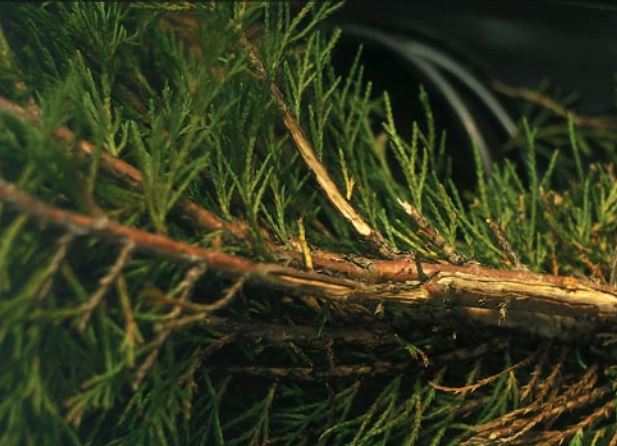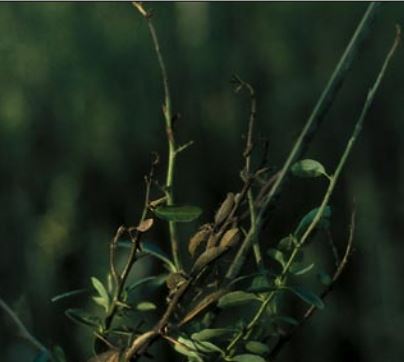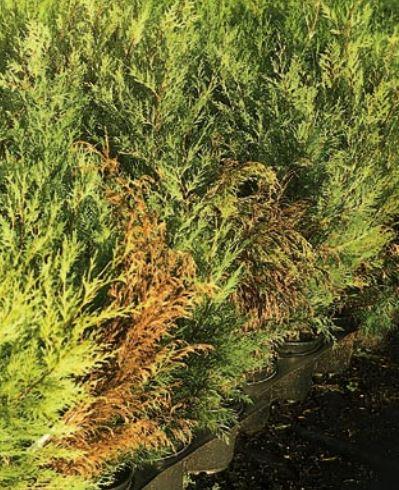Please click here to access the main AHDB website and other sectors.
- Home
- Knowledge library
- Symptoms of winter-injury of container grown nursery stock
Symptoms of winter-injury of container grown nursery stock
Recognising the symptoms of winter injury can help you preserve the saleability of your stock.
This information was last updated in 2005.
Back to the main page: winter protection of container grown nursery stock
The symptoms of winter injury in container stock show themselves in different ways.
Some of these symptoms are more immediate, such as the physical damage to stems and branches caused by snow or ice.
However, other symptoms can take longer to appear and not become apparent until the spring when new top growth may fail to develop, for example due to waterlogged root systems.
The true impact on saleability can therefore be delayed and difficult to assess until well after the damage originally occurred.
Spotting the symptoms
- Physical damage to stems or branches caused by strong winds, snow or ice.
- Dead/decaying/discoloured roots due to water-logging and/or freezing temperatures.
- Bark or stem splitting above ground/ just above growing media (see figure 1).
- Stem/crown die-back due to dead roots, frost damage and disease infection (figure 2).
- Pronounced leaf-drop due to frost injury or waterlogged roots.
 RSK ADAS
RSK ADAS
Figure 1. Stem splitting/stem damage on conifer - upright conifer varieties are particularly prone to this kind of winter injury caused by wind, frost and desiccation.
 RSK ADAS
RSK ADAS
Figure 2. Winter injury can cause damaged root symptoms which results in stem die-back.
- Discoloured leaves, usually brown, necrotic and ‘scorched’, often around the margins (e.g. evergreen subjects).
- Brown, dry discoloured foliage and needle drop with conifer varieties (see figure 3).
- Botrytis infection typically following frost injury or physical damage.
- Failure of new growth to develop in spring and/or sudden collapse of new growth due to damaged root systems.
 RSK ADAS
RSK ADAS
Figure 3. Brown discolouration on conifers is a classic symtom of dessication and is exacerbated by strong, cold winds and bright sun.

